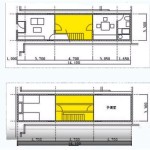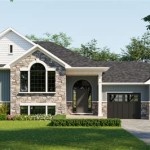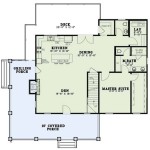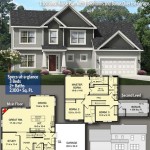Single Chamber Bat House Plans: A Comprehensive Guide
Bat houses offer crucial roosting habitat for bats, especially in areas where natural roost sites are declining due to deforestation, urbanization, and pesticide use. Constructing a bat house is a relatively simple and cost-effective way to support local bat populations, which play a significant role in insect pest control. Single chamber bat houses are a popular choice for beginners due to their straightforward design and ease of construction. This article provides a comprehensive guide to understanding single chamber bat house plans, covering essential design considerations, materials, construction steps, and placement strategies.
The importance of bat conservation cannot be overstated. Bats are vital contributors to ecosystem health, primarily through insectivory. A single bat can consume thousands of insects in a single night, helping to regulate insect populations and reduce the need for chemical pesticides in agriculture. However, bat populations are facing numerous threats, including habitat loss, white-nose syndrome, and human persecution. Providing artificial roosting sites, such as bat houses, is a proactive step toward mitigating these threats and supporting bat survival and reproduction.
Understanding the Design of a Single Chamber Bat House
Single chamber bat houses, as the name suggests, consist of a single vertical chamber where bats can roost. The dimensions and specific design features of the bat house are crucial for attracting and retaining bats. Key design considerations include the size of the roosting chamber, the width of the entrance slot, and the texture of the roosting surfaces.
The internal dimensions of the roosting chamber directly influence the number of bats that can occupy the bat house. While exact dimensions may vary, a general guideline is to provide approximately 12-14 inches of vertical space within the chamber. The width of the chamber can range from 18 to 24 inches, providing ample space for a colony of bats to cluster together. The depth of the chamber, from the front to the back, is typically around 3-6 inches. These dimensions accommodate the natural roosting behavior of bats, allowing them to hang comfortably and maintain close proximity to each other for warmth and security.
The entrance slot is a critical feature that allows bats access to the roosting chamber. It should be narrow enough to exclude predators, such as birds, while remaining wide enough for bats to easily enter and exit. A slot width of ¾ to 1 inch is generally recommended. The slot extends along the entire bottom length of the bat house, providing bats with multiple entry points. A rough landing area below the slot, such as a section of hardware cloth or grooved wood, allows bats to easily grip and climb into the bat house. This textured surface is essential for providing the necessary traction for bats to navigate into and out of the roost.
The texture of the interior roosting surfaces is another important consideration. Bats require a rough surface to grip while roosting. Smooth surfaces are unsuitable, as bats will struggle to maintain their hold. The interior surfaces of the bat house should be roughened using grooves, saw marks, or paint with a coarse texture additive. Vertical grooves spaced approximately ½ inch apart provide an excellent grip for bats to hang onto. Avoid using chemicals or preservatives on the interior surfaces, as these can be harmful to bats.
Materials and Construction Techniques
Selecting the appropriate materials is essential for ensuring the longevity and functionality of a bat house. Durable, weather-resistant materials are necessary to withstand the elements and provide a suitable roosting environment for bats. Untreated wood is the preferred material, as it is non-toxic and provides a natural texture for bats to grip. Plywood, cedar, and redwood are commonly used options. Avoid using treated lumber, as the chemicals used in the treatment process can be harmful to bats.
When constructing the bat house, accurate measurements and precise cuts are crucial for ensuring a structurally sound and functional design. Use a saw to cut the wood pieces according to the dimensions specified in the chosen single chamber bat house plan. Assemble the pieces using screws, rather than nails, as screws provide a stronger and more durable connection. Ensure that all joints are tight and secure to prevent drafts and maintain a stable internal temperature.
Proper ventilation is essential for preventing overheating within the bat house, especially during hot summer months. While a single chamber bat house design inherently provides some degree of ventilation through the entrance slot, additional ventilation may be necessary in warmer climates. Small ventilation holes, approximately ¼ inch in diameter, can be drilled near the top of the bat house to facilitate air circulation. However, avoid creating excessive ventilation, as this can lead to temperature fluctuations and make the bat house less attractive to bats.
Caulking all seams and joints of the bat house can help to seal out drafts and moisture. Use a non-toxic, paintable caulk to seal any gaps or cracks in the construction. This will not only improve the insulation of the bat house but also prevent water from entering the roosting chamber. Applying a dark-colored, water-based stain or paint to the exterior of the bat house can help to absorb solar heat. Dark colors are generally preferred, as they help to warm the bat house during cooler weather. Avoid using oil-based paints or stains, as these can emit harmful fumes.
Placement and Maintenance Considerations
The location of the bat house significantly impacts its likelihood of being occupied by bats. Bat houses should be placed in areas that receive ample sunlight, as bats prefer warm roosting environments. Ideally, the bat house should receive at least six hours of direct sunlight per day. Mounting the bat house on a pole or the side of a building are common placement options. Avoid mounting the bat house on a tree, as this can make it more accessible to predators and hinder the bat’s flight path.
When choosing a location, consider the surrounding habitat. Bats prefer locations near water sources, such as streams, ponds, or lakes, as these areas tend to have a high concentration of insects. Also, ensure that the area is free from obstructions, such as trees or power lines, that could interfere with the bats' flight path. The bat house should be mounted at least 12-15 feet above the ground to provide adequate protection from predators.
Regular maintenance of the bat house is essential for ensuring its continued functionality and attractiveness to bats. Inspect the bat house annually for any signs of damage or deterioration. Repair any cracks or leaks promptly. Remove any debris or wasp nests that may accumulate inside the bat house. Avoid disturbing the bat house during the breeding season (typically from May to August), as this can disrupt bat colonies and harm young bats.
It is important to note that attracting bats to a bat house can take time. It may take several months or even years for bats to colonize a new bat house. Patience is key. If the bat house remains unoccupied after a year or two, consider relocating it to a different location. Experiment with different orientations and sun exposure to find the optimal placement for attracting bats. By following these guidelines, individuals can create a suitable habitat for bats and contribute to their conservation.
In addition to the information provided above, it is recommended to consult with local bat conservation organizations or wildlife experts for specific advice on bat house design and placement in your region. Different bat species have different preferences, and understanding the needs of local bat populations is crucial for maximizing the success of bat house projects.

Bat Houses Mass Gov

Single Chamber Bat House Lonestarwoodcraft Com

Pin By Ana Silvia On Sobrevivência Bat House Plans Houses

Bat House Plans Diy

Bat House Construction And Installation
Building A Bat House

20 Diy Bat House Plans Insteading

20 Diy Bat House Plans Insteading
Building Homes For Bats
Building Homes For Bats








